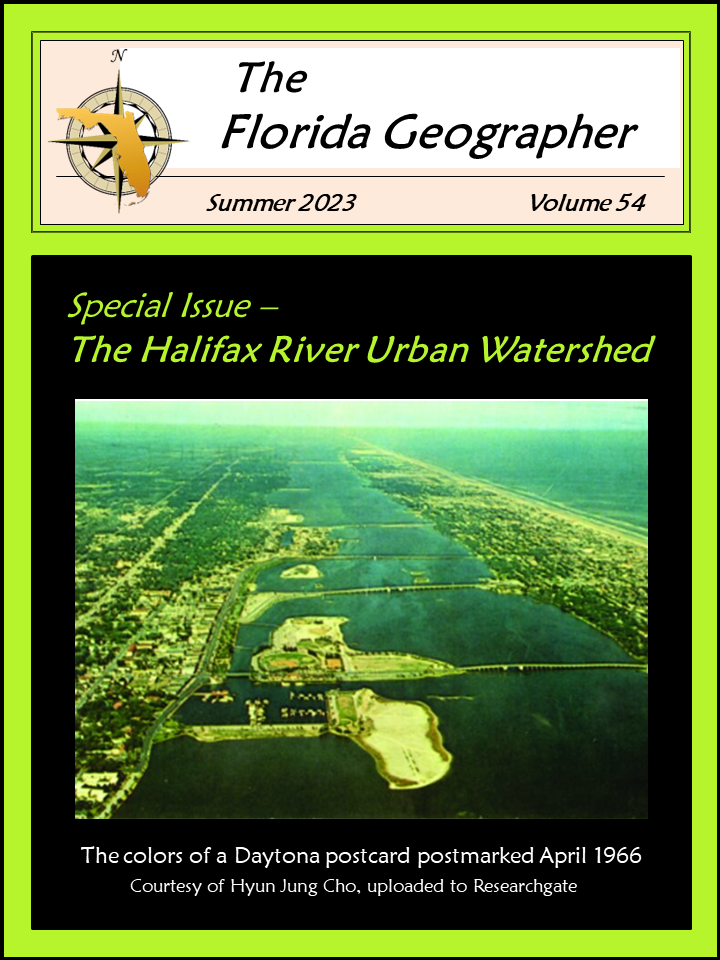Epilogue: Transportation, Development, and the Landscape of the Halifax Region
Abstract
The previous articles in this edition have painted a relatively broad picture of the development of the Halifax River region highlighting transportation, access, and consequent activities. It seems clear that the external immigration, occupation, and development of the Halifax River watershed was tightly linked to the expansion of access to the area, access that was both aided and hindered by the physical geography of the region. As external technology and effort were focused on the area, the impacts of that effort accrued to the detriment of some groups (such as the original populations at the time of outside arrivals) or activities (such as indigo and sugar agriculture) and to the benefit of others (e.g. recreation, urbanization). Underlying the extensive early changes to the region, however, was a common theme: the need to first conform with, adapt to, or otherwise alter the restrictions on movement imposed by the surrounding landscape.

